
Image Source
College students are often considered one of the most politically active sections of the population. Whether the issue is war, desegregation, gay rights or freedom of speech, throughout history students have rallied and protested, to make their stances known and their voices heard.
Demonstrations and protests can lead to important changes for educational institutions, and for the country as a whole. Interestingly, studies have also proven that protest campaigns can significantly alter the lives of the individuals who choose to be a part of them. Some also point out that the leaders of tomorrow are shaped by their experiences as young people – and in college, this might well involve activism and protest. Here’s a look at 10 powerful photos that really captured iconic moments in American student protest history.
10. Jackson State Killings – 1970
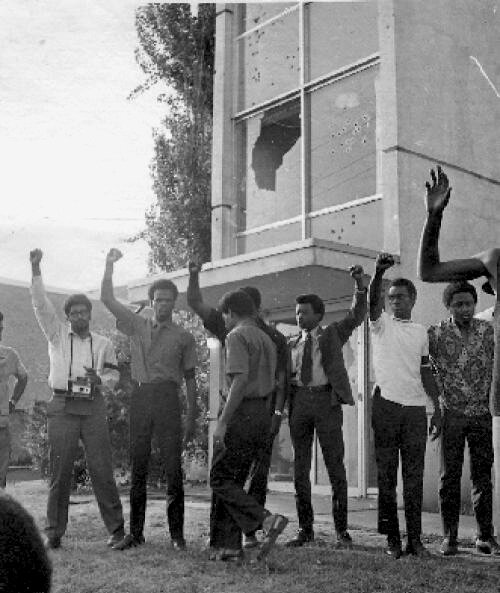
Image Source
On May 14, 1970, about 100 African-American students from Jackson State College in Mississippi assembled on Lynch Street, Jackson to protest against racial discrimination – or, according to other sources, the Vietnam War. Reportedly, some of the young people threw rocks at motorists, and one non-Jackson State student increased the tension by setting fire to a dump truck. The combined force of no less than 75 Jackson police units and the Mississippi Highway Patrol were dispatched to try to disperse the crowd.
For reasons that are still unclear, officers opened fire and rained some 150 rounds into the women’s dormitory of Jackson State College. The barrage went on for about half a minute and damaged every window in one area of the building. One college student and one high school pupil were killed by gunfire, while 12 others were wounded. Today, bullet holes still mark the dormitory.
The photograph above shows students raising their fists in solidarity after the shooting. According to one Jackson State instructor, “What the shooting did is that it showed, even through this heinous act, black intellect could not be stopped.”
9. University of California, Berkeley Free Speech Movement – 1964-1965
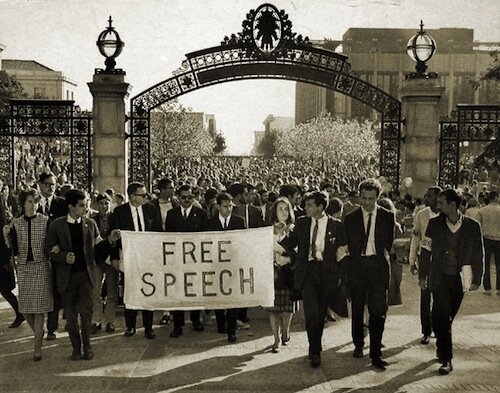
Image Source
In the 1964–1965 academic year, students at the University of California, Berkeley spent months protesting against the university’s administration. The students wanted a ban on political activities on campus to be lifted, and they demanded that the university accept their right to freedom of expression.
The protest began spontaneously on October 1, 1964 when students – as many as 3,000 at one stage – gathered around a police car that held arrested former grad student Jack Weinberg. For 32 hours, students refused to let the car move, and used it as a podium from which to express their views in public, until the authorities dropped the charges against Weinberg.
Two months later, up to 4,000 students took over Berkeley campus’ Sproul Hall for almost two full days, before police moved in and started arresting the hundreds still assembled. Even so, the administration finally conceded in January 1965, with Sproul’s steps designated a space for open discussion. This was a huge success for the civil liberties movement, and ever since, Berkeley students have maintained a legacy of activism.
8. Jim Zwerg and the Freedom Riders – 1961
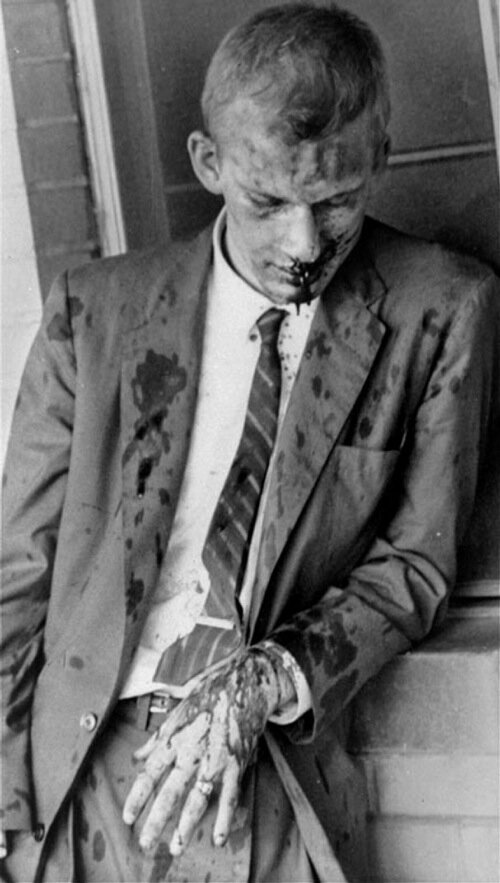
Image Source
On May 20, 1961, Jim Zwerg arrived at a bus station in Montgomery, Alabama to be greeted by a seething mob armed with clubs, chains, baseball bats and iron pipes. Zwerg was a member of the Freedom Riders, a group of black and white students who had chosen to ride through the South on interstate buses to protest against the segregation of public transportation there. Accepting that he might die as he stepped off the vehicle, Zwerg was severely beaten by the mob, and the image of his slender, bloodied frame would go on to make him a hero in people’s eyes.
From his hospital bed, his voice weak from the beating, Zwerg asserted that violence would not stop him or the other Freedom Riders. The Freedom Riders went on to inspire others to join the civil rights movement, not only to promote desegregation but also to fight for other causes.
7. Violence In Boston – 1976
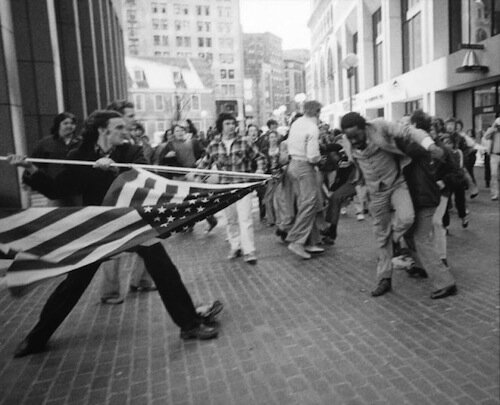
Image Source
In 1974, judge Arthur Garrity Jr. outlined a plan to desegregate Boston schools by busing students from mostly white districts to predominantly black schools. Many Bostonians, especially white residents, were incensed by the scheme and took to the streets in protest. White high school students were furious that half of the kids they grew up with were suddenly being forced to go to a school across town, and they joined the protestors.
On April 5, 1976, African-American lawyer Ted Landsmark was attacked by a group of protesting students while on his way to a meeting. Seventeen-year-old Joseph Rakes, pictured above in Pulitzer Prize-winning photograph The Soiling of Old Glory, tried to hit Landsmark with a flagpole. He missed by a hair, although Landsmark had his nose broken by a separate blow. Rakes was convicted of assault and handed a two-year suspended sentence. Still, the problems in the city continued for over 10 years, until the busing scheme was put to an end in 1988.
6. Columbia University Unrest – 1968
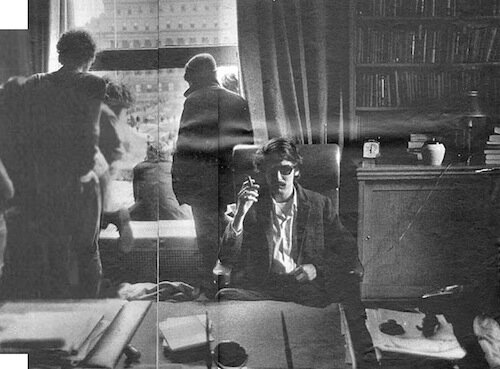
Image Source
In March 1967, student activist Bob Feldman uncovered proof that Columbia University had links with a weapons research organization. Over the following year, students responded with anti-war protests, and six activists (the “IDA Six”) were famously put on probation for breaching a ban on demonstrations indoors. Matters were also exacerbated by evidence that the university was racially discriminatory – notably, surrounding a proposed gym whose design had a “special” back door for people from neighboring Harlem.
On April 23, 1968, students took over university administrative spaces, including the acting dean’s office. Two members of staff and the acting dean were held hostage for more than 24 hours. And in the truly iconic photograph shown, student David Shapiro can be seen sitting in university president Grayson Kirk’s chair, smoking one of Kirk’s cigars. After two further days of campus building occupations, all classes were suspended, and other students began to counter-protest against the protesters.
The situation came to an end on April 30, when 1,000 police officers stormed the campus and arrested almost 700 students. However, the unrest continued into the summer, and the administration ultimately capitulated, ending their ties to the weapons research think tank and discontinuing plans for the gym.
5. The Little Rock Nine – 1957
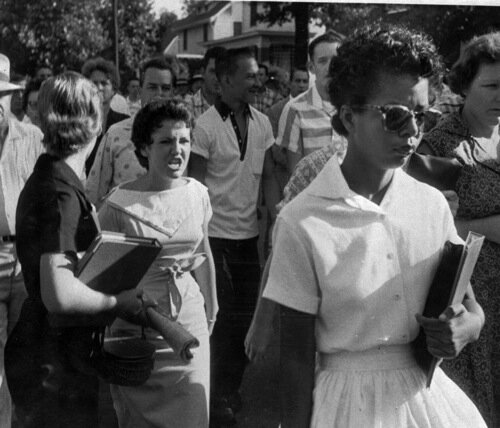
Image Source
On September 4, 1957 Elizabeth Eckford, aged 15, strode through a crowd of incensed and sneering white students and their parents on her way to Little Rock High School. She was one of nine black children who had been enrolled in the all-white school following a US Supreme Court ruling that declared all segregated schools to be unconstitutional. In retaliation, angry white mobs accompanied by the Arkansas National Guard under Governor Orval Faubus kept the African-American students from attending.
Determined, President Eisenhower sent in the 101st Airborne, which consisted of at least 1,000 paratroopers, to encircle and serve as an escort to the students as they entered the school. The “Little Rock Nine” were finally admitted on September 25, but they endured cruelty and abuse at the hands of their classmates.
4. James Meredith Enrolls At Ole Miss University – 1962
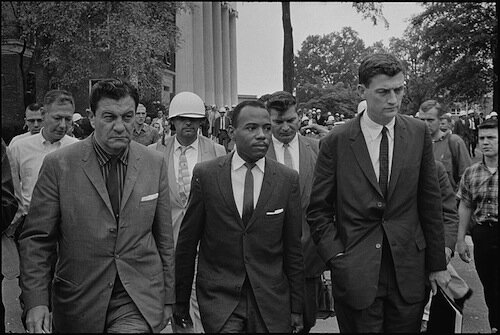
Image Source
When James Meredith demanded admission to the University of Mississippi (Ole Miss) he was turned down repeatedly, despite him having an excellent academic record. Still, Meredith was determined to see it through. Meredith recalls, “I reasoned that if I could enter the University of Mississippi as its first known black student, I would fracture the system of state-enforced white supremacy in Mississippi. It would drive a stake into the heart of the beast.”
On October 1, 1962, Meredith succeeded, accompanied by 500 US Marshals, Kentucky’s 70th Army Engineer Combat Battalion, the Mississippi Army National Guard, the US Border Patrol and the 503rd Military Police Battalion. Protestors rioted and clashed with the some 3,500 soldiers and officers protecting Meredith, leading to two deaths and injuries to at least 200 people – 160 of them US marshals. In spite of the violence, Meredith’s successful registration was a pivotal victory for the civil rights movement.
3. Peter Hallerman’s Earth Day Protest – 1970
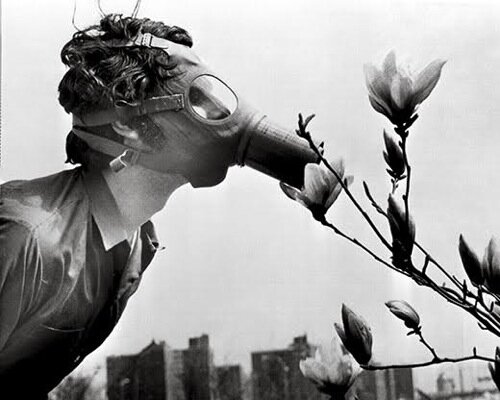
Image Source
On April 22, 1970, Pace College sophomore Peter Hallerman joined around 30 other students from his college for the very first Earth Day demonstrations. He couldn’t have had any idea how iconic his decision would become. All of New York City was abuzz for the inaugural Earth Day, and mayor John V. Lindsay toured the city in an electric bus, delivering a speech to crowds of people at Union Square. Some major thoroughfares were closed to vehicles, while girls distributed flowers, and protestors dragged nets containing dead fish through the streets.
Yet few images captured the sentiment of the day as powerfully as this photo of Peter Hallerman sniffing magnolias through a vintage gas mask. The photo was quickly reproduced across the country and has become a classic. In 2010, Hallerman rather humorously told the Smithsonian magazine, “I’m flattered to have been involved in something of such historic significance. But if that was my 15 minutes of fame, it’s a little frustrating that I was wearing a gas mask and looked like an anteater.”
2. Kent State Shooting – 1970
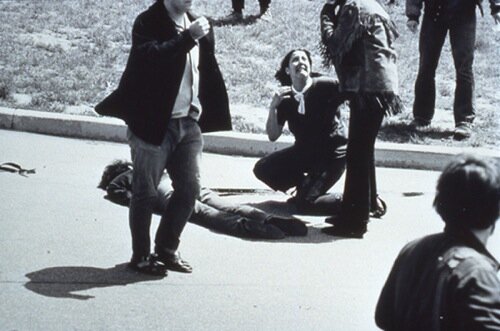
Image Source
On May 4, 1970, in spite of university officials’ attempts to cancel the event, Kent State University students protested against the Vietnam War on their college grounds. It was the beginning of what is undoubtedly one the most famous incidents in college protest history. Members of the National Guard ordered the students to disperse, but they refused and threw rocks. The guardsmen then used tear gas in an attempt to break up the 2,000-strong protest. And when that didn’t work, they advanced on the crowd with bayonets. Many of the students moved away and left, but a few lingered and continued to throw rocks.
For reasons that remain unclear, 29 of the 77 guardsmen opened fire on the crowd, killing four students and injuring nine. Two of the slain students weren’t even protesting; they were simply walking between classes. The shootings sparked nationwide protests, including student strikes that closed at least 450 college campuses. Summing up the sentiment, a banner hung by some New York University students read, “They can’t kill us all.” The events further swayed public opinion against Vietnam, and demonstrations escalated to the point where President Nixon had to retreat to Camp David for a couple of days.
The world-famous Pulitzer Prize-winning photograph by John Filo is shown at the beginning of this article. It shows the distraught Mary Ann Vecchio kneeling and gesturing over the body of student Jeffrey Miller, minutes after he was shot dead.
1. Don’t Tase Me, Bro – 2007
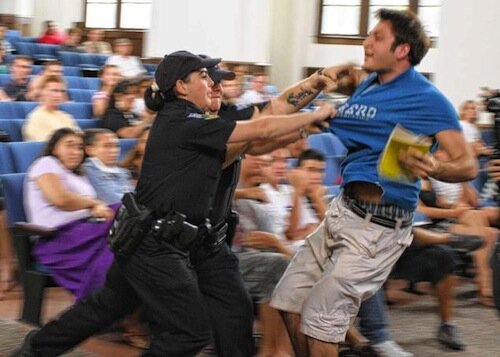
Image Source
Although most iconic photos of US student protests seem to be from the 1960s and 1970s, this shot from 2007 shows that some college students are still just as interested in the political issues of the day. Andrew Meyer, a 21-year-old student, struggled against police officers who were trying to suppress his outbursts. The incident took place during a forum with Senator John Kerry at the University of Florida in Gainesville on September 17.
The problem began when Meyer grabbed a microphone and agitatedly demanded that Senator Kerry answer his questions. Eventually, Meyer’s mic was cut off, and police officers tried to escort him from the building. He resisted, and more police joined in to try and subdue him. They eventually forced him to the ground and tasered him, despite Meyer’s pleas of, “Don’t tase me, bro!” The incident motivated around 400 students to protest against heavy-handed police action and the use of tasers. They made signs that read, “Freedom of speech not a felony,” “Tase pigs” and “Don’t tase me, bro!”
